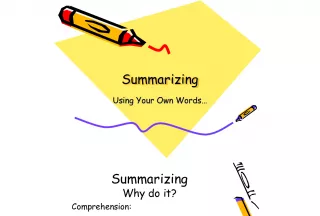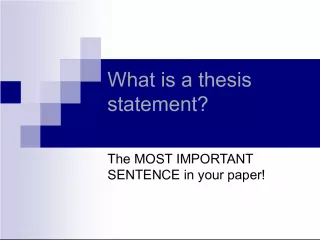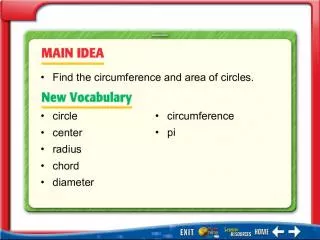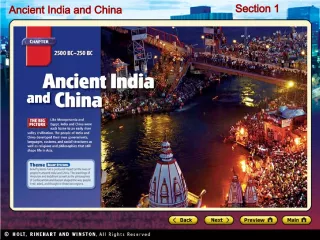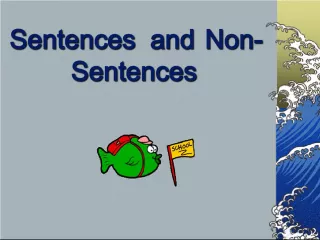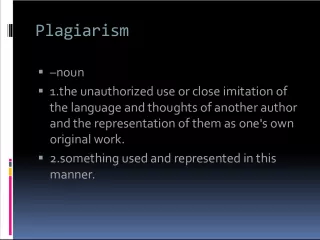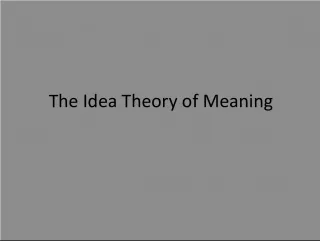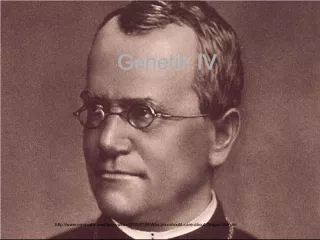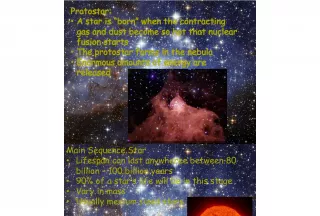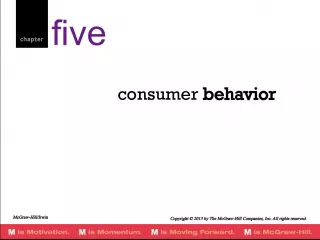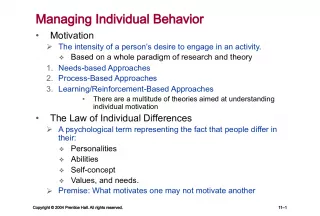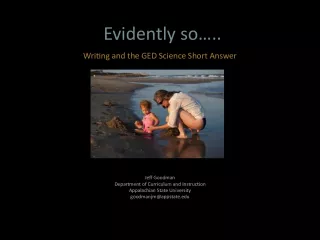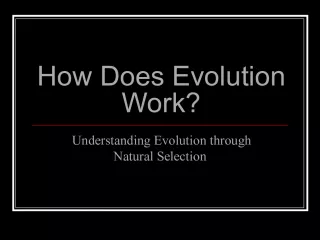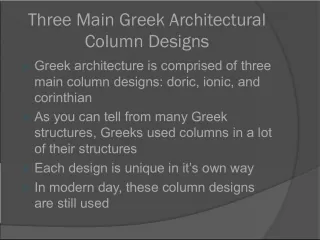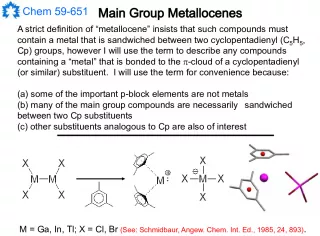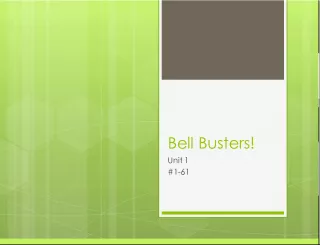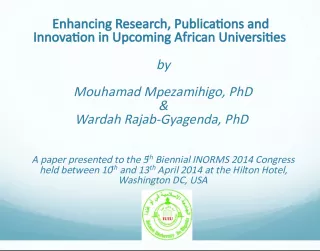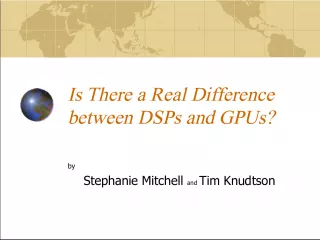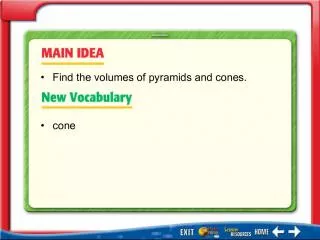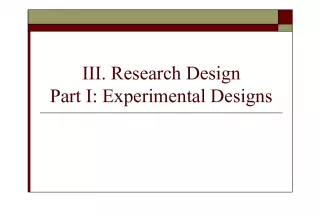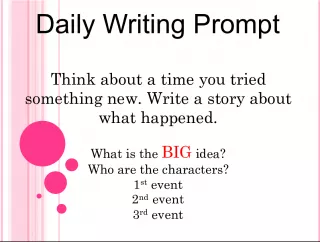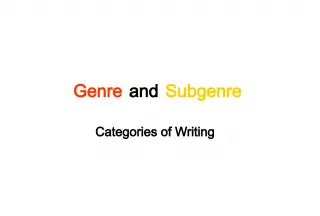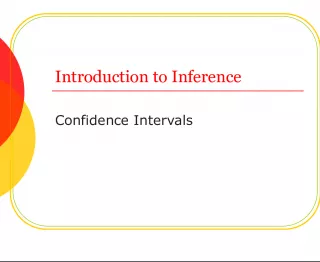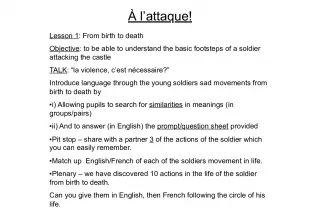Understanding Main Idea, Inferences, Conclusions, and Summarizing
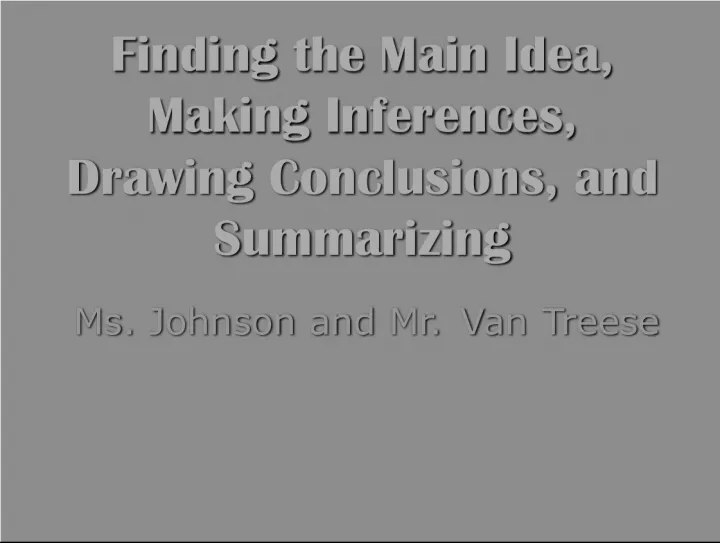

In this article, we will discuss the importance of finding the main idea of a paragraph and understanding how it differs from the topic. We will also cover the
- Uploaded on | 55 Views
-
 luna
luna
About Understanding Main Idea, Inferences, Conclusions, and Summarizing
PowerPoint presentation about 'Understanding Main Idea, Inferences, Conclusions, and Summarizing'. This presentation describes the topic on In this article, we will discuss the importance of finding the main idea of a paragraph and understanding how it differs from the topic. We will also cover the. The key topics included in this slideshow are . Download this presentation absolutely free.
Presentation Transcript
Slide1Finding the Main Idea, Making Inferences, Drawing Conclusions, and Summarizing Finding the Main Idea, Making Inferences, Drawing Conclusions, and Summarizing Ms. Johnson and Mr. Van Treese Ms. Johnson and Mr. Van Treese
Slide2Main Idea Main Idea The main idea of a paragraph is different from the topic. The main idea of a paragraph is different from the topic. The topic : what the paragraph is about. The topic : what the paragraph is about. The main idea : what the author says about the subject. The main idea : what the author says about the subject.
Slide3Why mightreaders have difficulty identifying the main idea of a passage?
Slide4 Stated at the end of a passage Stated within of a passage Implied within the passage Stated at the beginning of a passage Main Idea….
Slide5What aresome strategies for identifying the main idea of a passage?
Slide6Main Idea Formula Main Idea Formula Topic Topic + What author says about topic + What author says about topic + Author’s purpose + Author’s purpose = Main Idea = Main Idea
Slide7To find the main idea of a paragraph orpassage, ask yourself: What is the most important point the author wants me to understand about the topic?
Slide8The main idea is the most general statement about the topic: The main idea is the most general statement about the topic: People differ in numerous ways. They differ according to physical characteristics, such as height, weight, and hair color. They also differ in personality. Some people are friendly and easygoing. Others are more reserved and formal. People differ in numerous ways. They differ according to physical characteristics, such as height, weight, and hair color. They also differ in personality. Some people are friendly and easygoing. Others are more reserved and formal. Which is the most general statement? Identifying Main Ideas
Slide9At the beginning of the paragraph: " Beginning a new job is always exciting and sometimes intimidating . There is an invigorating feeling of a fresh start and a clean slate. You face new challenges and draw on a renewed sense of energy as you approach them. But you may also feel apprehensive . . . " (p.196, Opening Doors )
Slide10At the end of the paragraph: “. . .Most Anglo-Americans, for instance, see the extensive family obligations of Hispanics as a burdensome arrangement that inhibits individual freedom. Hispanics, in contrast, view the isolated nuclear family of Anglo-Americans as a lonely institution that cuts people off from the love and assistance of their kin. This tendency to view one's own cultural patterns as good and right and those of others as strange or even immoral is called ethnocentrism. " (p.197, Opening Doors)
Slide11Within the paragraph: " Jim always seems to score well on tests. How does he do it? Jim offers these tips for successful studying . The first step is to decide what to study. Find out what topics will be covered on the test. Next, organize your notes and other materials on these topics. Third, make study guides to use as memory aids. Your final step is to review your notes and study guides until you feel confident about taking the test." (from Becoming a Confident Reader , p.200)
Slide12"all organisms must insure that their offspring havea reasonable chance to survive and begin a new generation. Plants, however, face special challenges. Plants do not have nervous systems, and they are not able to run away from predators or pests. Because nearly all plants live in fixed positions, they must also manage to find mates without being able to move around. Therefore they have evolved strategies for dealing with these problems that are essentially passive. An important part of such strategies is a reproductive pattern enabling each individual to produce large numbers of offspring." (Levine and Miller, Biology , 1991)
Slide13Finding the Stated Main Idea Finding the Stated Main Idea 1. Locate the Topic 1. Locate the Topic 2. Locate the Most General Sentence /Thesis (if there is one) 2. Locate the Most General Sentence /Thesis (if there is one) 1. Check topic sentences: 1. Check topic sentences: 2. Topic Sentence First (usually) 2. Topic Sentence First (usually) 3. Topic Sentence Last (second in frequency) 3. Topic Sentence Last (second in frequency) 4. Topic Sentence in the Middle 4. Topic Sentence in the Middle 5. Topic Sentence First and Last (last = emphasis) 5. Topic Sentence First and Last (last = emphasis) 3. Study the Details — all the sentences in a paragraph must relate/support/explain the main idea. 3. Study the Details — all the sentences in a paragraph must relate/support/explain the main idea.
Slide14Inferring Unstated Main Ideas Inferring Unstated Main Ideas 1. Find the topic. 1. Find the topic. 2. Decide what the writer wants you to know about the topic. 2. Decide what the writer wants you to know about the topic. 3. Consider the author’s purpose or perspective on the topic. 3. Consider the author’s purpose or perspective on the topic. 4. Express this idea in your own words. 4. Express this idea in your own words. Identifying Main Ideas
Slide15Making Inferences and Drawing Conclusions Making Inferences and Drawing Conclusions “Reading between the lines.” “Reading between the lines.” Using clues from the text to figure out what the author is trying get across. Using clues from the text to figure out what the author is trying get across. Some ideas are not stated directly in the text; YOU have to draw your own conclusions about what is going on. Some ideas are not stated directly in the text; YOU have to draw your own conclusions about what is going on.
Slide16what conclusions can we draw by making inferences aboutthis picture? http://en.beijing2008.cn/photo/
Slide17What is going on in this story? What is going on in this story? “He put down $10 at the window. The woman behind the window gave $4. The person next to him gave $3, but he gave it back to her. So, when they went inside, she bought him a large bag of popcorn.” “He put down $10 at the window. The woman behind the window gave $4. The person next to him gave $3, but he gave it back to her. So, when they went inside, she bought him a large bag of popcorn.”
Slide18Guided Practice Guided Practice See “Ordeal by Cheque.” See “Ordeal by Cheque.” Work with a partner or small group to use clues from the checks to construct a story. Work with a partner or small group to use clues from the checks to construct a story.
Slide19Independent Practice Independent Practice See “Implicit Main Ideas Student Page.” See “Implicit Main Ideas Student Page.” Use the skills that we’ve practiced to make inferences and draw conclusions about the main ideas in the two passages on the handout. Use the skills that we’ve practiced to make inferences and draw conclusions about the main ideas in the two passages on the handout.
Slide20SummarySummary What makes a good summary? What makes a good summary? Shorter than the main text. Shorter than the main text. Contains the main ideas . Contains the main ideas . Does not contain all of the supporting details. Does not contain all of the supporting details. Follows the text structure and order of the main text. Follows the text structure and order of the main text.
Slide21ModelingModeling See “Gardening with Native Plants” handout. See “Gardening with Native Plants” handout. Read article as a class. Read article as a class. What is the main idea? What is the main idea? What supporting details can we leave out? What supporting details can we leave out? What is the text structure? What is the text structure? Now, using these ideas, we can write a good summary. Now, using these ideas, we can write a good summary.
Slide22Summary of “Native Plants” article Summary of “Native Plants” article Although native plants are beautiful and important to wildlife, they are disappearing. People can easily grow native plants in their gardens because they are accustomed to the conditions of an area. When choosing a native plant, think about the plant’s needs. Be sure that you have the right amount of sunlight, moisture, and appropriate space to accommodate plant size. Although native plants are beautiful and important to wildlife, they are disappearing. People can easily grow native plants in their gardens because they are accustomed to the conditions of an area. When choosing a native plant, think about the plant’s needs. Be sure that you have the right amount of sunlight, moisture, and appropriate space to accommodate plant size.
Slide23©Kristi Orcutt, kristio@essdack.org, 2007Some Examples Some Examples Read the “Bats Can Be Farmer-Friendly!” handout. Read the “Bats Can Be Farmer-Friendly!” handout. What is the text type? What is the text type? What is the text structure? What is the text structure? Which of the four summaries is the best? Which of the four summaries is the best?
Slide24Guided Practice Guided Practice Summarize the story “A Room Full of Silly Clowns”. Summarize the story “A Room Full of Silly Clowns”. Use the “Give Me a Hand!” graphic organizer. Use the “Give Me a Hand!” graphic organizer. Trace your hand on a sheet of paper. On each finger, list a key point from the story. Trace your hand on a sheet of paper. On each finger, list a key point from the story. After you have five key points, write a 3-5 sentence summary. After you have five key points, write a 3-5 sentence summary.
Slide25Putting It All Together Putting It All Together Individually, look at the article “Bone Up on Bone Loss! Exercise to Build Healthy Bones!” Individually, look at the article “Bone Up on Bone Loss! Exercise to Build Healthy Bones!” Before reading the article, look at the subheadings and text boxes in the article. Before reading the article, look at the subheadings and text boxes in the article. What inferences can you make about the main idea of the article? Write down what you think the main idea of the article will be. What inferences can you make about the main idea of the article? Write down what you think the main idea of the article will be.
Slide26Now go back and read the article. Was your prediction right? What is the main idea of the article? How do you know? Now go back and read the article. Was your prediction right? What is the main idea of the article? How do you know? Now read the four summary choices. Choose the best summary. Why? For each of the other choices, explain why it is not the best. Now read the four summary choices. Choose the best summary. Why? For each of the other choices, explain why it is not the best.
